Boletus L.
Recent molecular studies have shown that Boletus in its current circumscription is likely an artificial grouping and it is possible that it will be split at some point into smaller genera. Note that Boletus impolitus and Boletus depilatus for practical reasons are retained here, although there is strong evidence that they are closely related to Xerocomus subtomentosus and its allies.
Fruitbody large to medium sized, boletoid, without veil and ring. Stipe solid, with surface usually covered with granules or network. Flesh variously coloured, changing or not when exposed to air. Tubes easily separable from each other, not tearing apart. Pores usually small and rounded.
Boletus depilatus Redeuilh
Description
Pileus up to 8 cm, convex to flat-convex, wrinkled, light brown, brown, brick red. Stipe tapering or spindle-shaped, curved and deeply buried in the substrate, fibrilose, white to dingy white, at the base and at the apex pale yellow, below the tubes with reddish band. Flesh white, in the stem base and above the tubes yellowish white or pale yellow, unchanging after exposure to the air, or slowly reddening above the tubes. Tubes pale yellow to yellow with olivaceous tint, unchanging. Pores concolorous with the tubes, unchanging when bruised. Smell not distinctive. Taste not distinctive. Spores 12–14 × 4.5–5.5 μm, ratio 2.2–2.7. Pileipellis (the cap cuticle) a palisadoderm, composed of hyphae of sperical and shortly cylindrical, not incrusted cells, terminal cells 16.5–44 × 8.5–30 μm, ratio 1–4.5. Macrochemical reactions: NH4OH 10 % with the pileipellis and the flesh of the pileus pinkish. Microchemical reactions: hyphae of the flesh in the stipe base inamyloid with Melzer’s reagent.
Habitat. Deciduous forests, mycorrhizal with hornbeam (Carpinus) and hop-hornbeam (Ostrya).
Distribution. Not yet fully understood. Records are available from Austria, Belgium, Bulgaria, Corsica, Croatia, former Czechoslovakia, Germany, France, Italy, Spain, Switzerland, Turkey and the United Kingdom. There are also some recent sightings in Hungary (L. Kaposvári, in litt.)
Similarity. Similar and might be confused with Boletus impolitus. Recognized in the field by its wrinkled or hammered cap surface and its mycorrhiza with hornbeam or hop-hornbeam, but examination of the cap cuticle is always required to confirm the determination. Compare also to Xerocomus subtomentosus.
Photographs
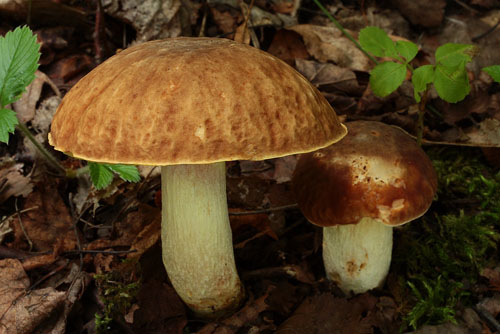
Fruitbodies of Boletus depilatus. Note the hammered-like cap surface. (photo M. Mikšík)
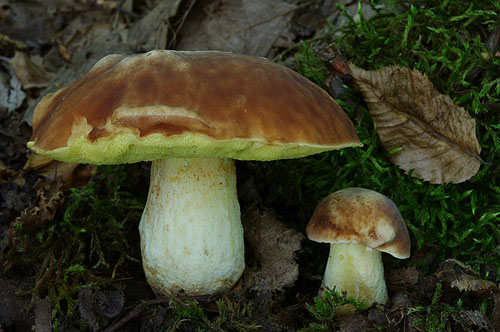
Fruitbodies of Boletus depilatus. (photo M. Mikšík)
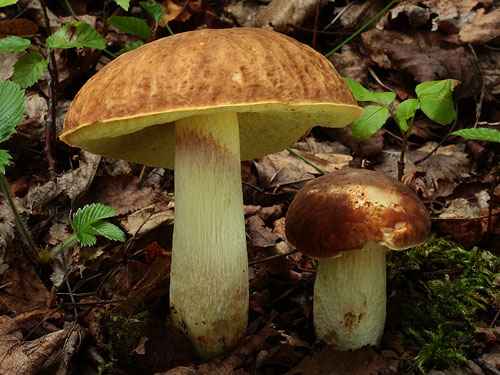
Fruitbodies of Boletus depilatus. Note the reddish band on the stipe. (photo M. Mikšík)
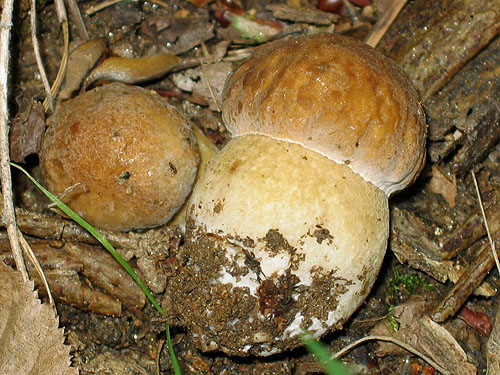
Young fruitbodies of Boletus depilatus. (photo B. Assyov)
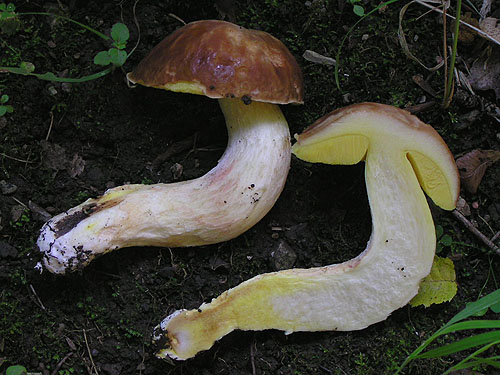
Fruitbodies of Boletus depilatus. Note the colour of the flesh. (photo H. Pedashenko)
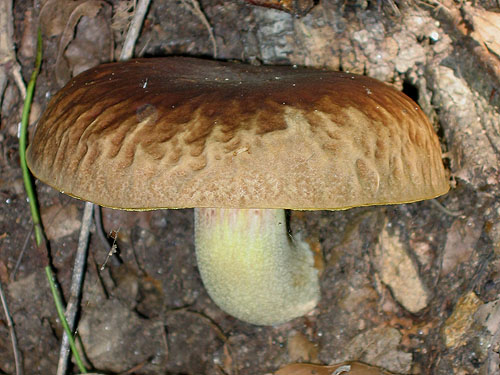
Fully developed fruitbody of Boletus depilatus. Note again the hammered-like surface. (photo B. Assyov)
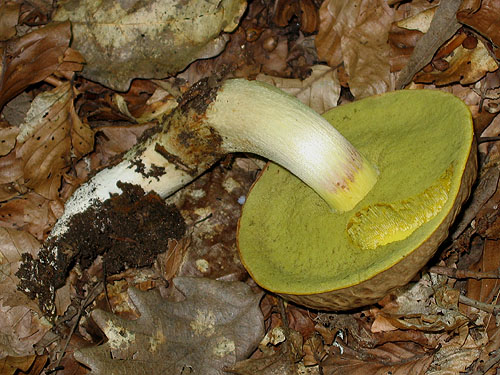
Lower side of fruitbody of Boletus depilatus. Note the deeply rooted stipe. (photo B. Assyov)
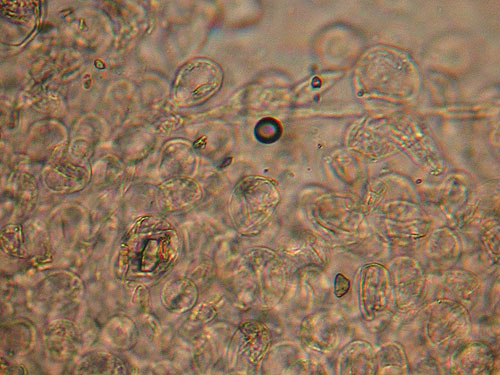
Detail of the cap cuticle of Boletus depilatus under light microscope. Note the rounded and not incrusted cells. (photo B. Assyov)
Important literature
Alessio, C.L. 1991. Supplemento a Boletus Dill. ex L. (sensu lato). – In: Fungi Europaei. Vol. 2A. Pp. 1–126. Libreria editrice Biella Giovanna, Saronno.
Breitenbach J. & Kränzlin F. 1991. Pilze der Schweiz. Bd. 3(1). Röhrlinge und Blätterpilze. Verlag Mykologia, Luzern.
Estadès, A. & Lannoy, G. 2004. Les bolets européens. – Bulletin Mycologique et Botanique Dauphiné-Savoie 44(3): 3–79.
Galli, R. 1998. I Boleti. Atlante pratico-monographico per la determinazione dei boleti. Edinatura, Milano.
Knudsen, H. & Vesterholt, J. [eds.]. 2008. Funga Nordica. Nordsvamp, Kopenhagen.
Ladurner, H. & Simonini, G. 2003. Xerocomus s.l. – In: Fungi Europaei. Vol. 8. Pp. 1–527. Edizioni Candusso, Alassio.
Lannoy, G. & Estadès, A. 2001. Les Bolets. Flore mycologique d’Europe. Documents Mycologiques Mémoire Hors série no. 6. Pp. 1–163. Association d’Écologie et de Mycologie, Lille.
Muñoz Sánchez, J.A. & Cadiñanos, J.A. 2001. Algunos Boletales interesantes de la Península Ibérica. – Bellara 17–18: 55–64. (available online)
Šutara, J., Mikšík, M. & Janda, V. 2009. Hřibovité houby. Čeled’ Boletaceae a rody Gyrodon, Gyroporus, Boletinus a Suillus. Academia, Praha.